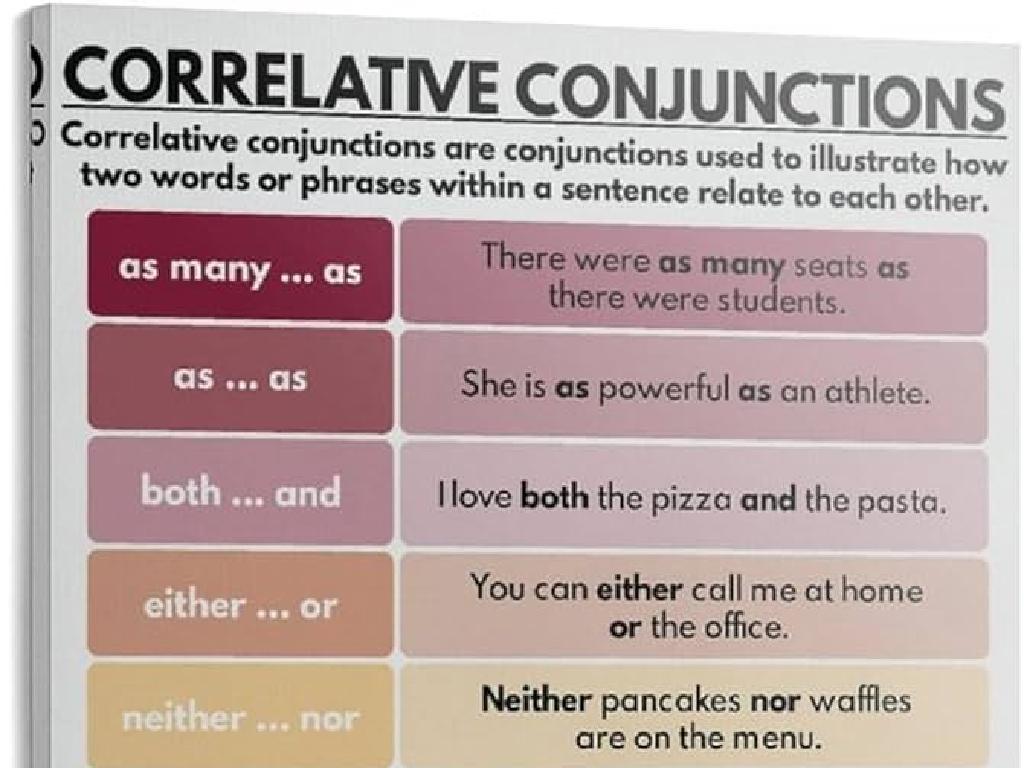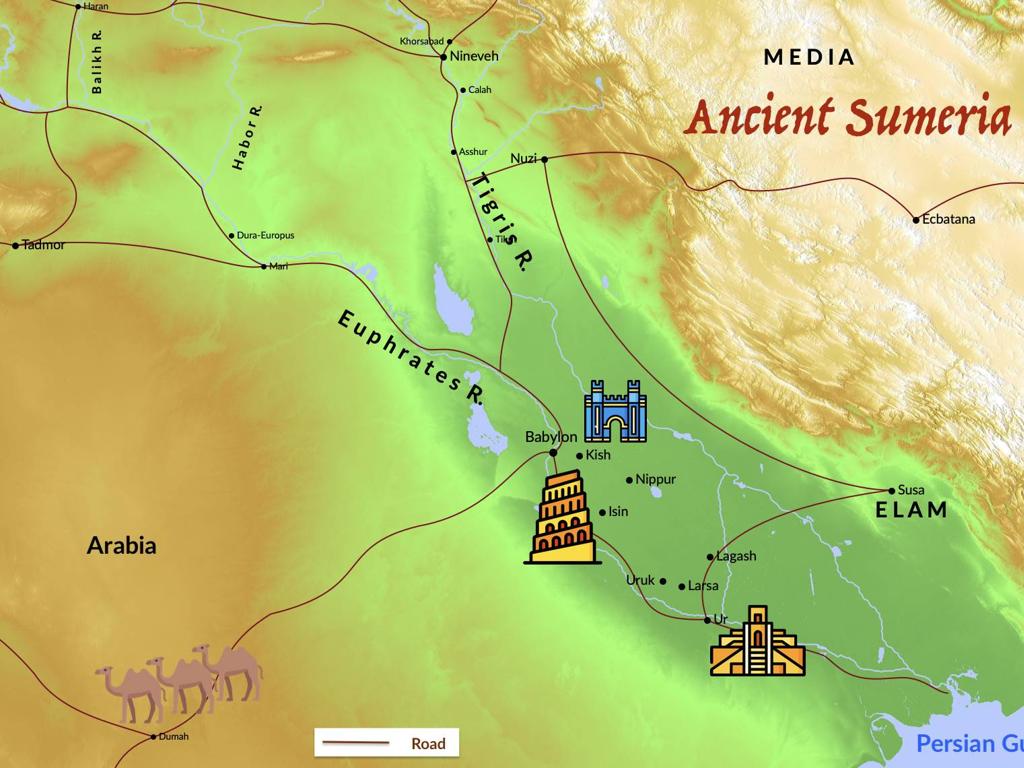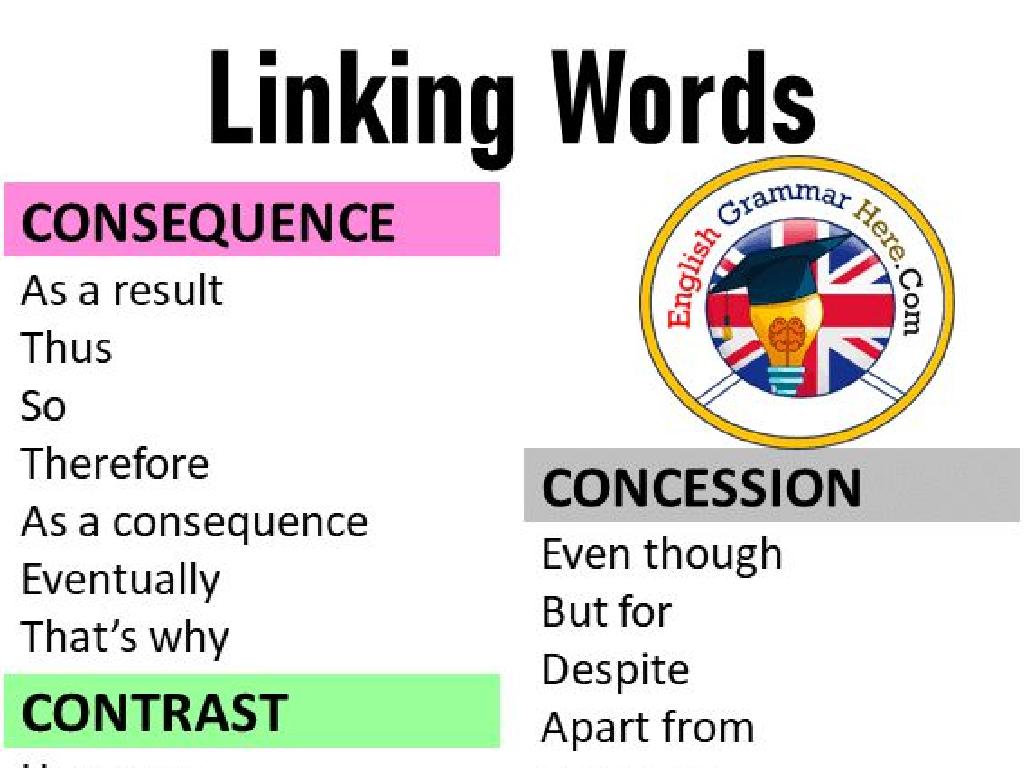Select The Members Of A Group
Subject: Language arts
Grade: Fourth grade
Topic: Categories
Please LOG IN to download the presentation. Access is available to registered users only.
View More Content
Welcome to Categories!
– Learn about grouping items
– Understand categorization
– Grouping based on similarities
– Discover why it matters
– Helps organize thoughts and items
– Examples of categories
– Animals, Foods, Colors
|
This slide introduces the concept of categories to fourth-grade students, emphasizing the importance of grouping items based on shared characteristics. Categorization is a fundamental skill that aids in organizing information and understanding the world around us. By learning to categorize, students can better analyze and comprehend various subjects. Use examples like animals (mammals, reptiles), foods (fruits, vegetables), and colors (primary, secondary) to illustrate the concept. Encourage students to think of their own examples and understand that categorization is a tool we use daily to make sense of complex information.
Understanding Categories
– What is a category?
– A group with shared characteristics
– Common examples of categories
– Fruits, Animals, Shapes
– Identifying categories
– How to determine what fits into a category
– Your turn to think of a category
|
This slide introduces the concept of categories, which is a foundational element in organizing and understanding various groups in language arts. Start by explaining that a category is a collection of items that share common features. Provide familiar examples such as fruits, animals, and shapes to illustrate the point. Engage the students by asking them to identify what makes these examples categories. Then, encourage them to think of their own category, prompting them to consider what the members of that group have in common. This activity will help students to start recognizing patterns and classifications in language, which is a critical thinking skill.
Selecting Members of a Group
– Understanding categories
– Categories sort things with similar traits
– Finding common features
– Look for shared characteristics
– Practice with an example
– Example: Fruits or Not? Apple, Carrot, Banana
– Grouping items correctly
|
This slide introduces the concept of categorization, a key skill in language arts that helps students organize information and understand relationships between different items. Start by explaining what a category is and how it groups items with similar characteristics. Discuss the importance of looking for common features to determine if something belongs in a category. Use an interactive example, such as sorting items into ‘Fruit’ or ‘Not a Fruit,’ to give students hands-on practice. Encourage students to explain why they categorized the items as they did, reinforcing their understanding of common features and categories.
Animal Categories: Mammals vs. Reptiles
– What defines a Mammal?
– Mammals are warm-blooded and have hair or fur.
– Characteristics of Mammals
– They give birth to live young and feed them milk.
– Mammals vs. Reptiles
– Reptiles are cold-blooded and lay eggs.
– Class Activity: Sorting Animals
|
This slide introduces the concept of animal classification, focusing on the characteristics that define mammals. Discuss how being warm-blooded and having fur or hair are key traits of mammals, and contrast these with reptiles, which are cold-blooded and typically lay eggs. For the class activity, provide a mix of animal pictures or names and ask students to work in groups to classify them into mammals or reptiles. This will help reinforce their understanding of the differences between these two categories. Possible animals for the activity include dogs, cats, lions (mammals) and snakes, lizards, turtles (reptiles).
Group Activity: Categorizing Fun!
– Work together in groups
– Each group gets a picture set
– Sort pictures into categories
– Think about what the pictures have in common
– Discuss your categories
– Why did you choose those categories?
|
This group activity is designed to encourage collaboration and critical thinking as students work together to categorize a set of pictures. Provide each group with a diverse set of pictures and instruct them to sort these into categories based on common characteristics. Possible categories could be animals, food, places, or objects found at school. After sorting, ask each group to discuss their rationale for their chosen categories, promoting dialogue and reasoning. As a teacher, facilitate the discussion by asking guiding questions and ensure that each student participates. This activity will help students understand the concept of categorization and its application in organizing information.
Sharing Our Categories
– Each group presents their categories
– Explain your grouping choices
– Why did certain items go together?
– Discuss various categorization methods
– How might someone else group these?
– Understand there’s no single way to categorize
– Some items can fit in multiple categories
|
This slide is meant to facilitate a class activity where students will engage in presenting and discussing the categories they’ve created. Each group will take turns to explain the rationale behind their categorization, promoting critical thinking. The class will then discuss alternative ways items could be grouped, highlighting that categorization is subjective and dependent on perspective. Encourage students to think creatively and recognize that items can often fit into more than one category. This activity will help students understand the flexible nature of categorization and enhance their ability to organize information effectively.
Class Activity: Create Your Own Categories
– Invent a unique category
– Choose items that match your category
– Look around the room for objects that share a common feature
– Explain why items fit your category
– Think about what makes these items similar
– Share your category with the class
|
This activity is designed to help students understand the concept of categories by creating their own based on unique features they identify. Encourage them to be creative and think broadly about what could constitute a category. It could be color, shape, size, or function. Once they select items, they should be prepared to explain their reasoning. This will help them practice articulating their thoughts and using language to classify and categorize objects. For the teacher: Prepare to facilitate by offering examples of categories, guiding students who may be struggling to find a common feature, and encouraging discussion among students about their choices. Possible activities could include categorizing books by genre, grouping classroom objects by material (metal, plastic, wood), or creating a category based on the items’ uses.
Wrapping Up: The Power of Categories
– Congratulations on mastering Categories!
– Categorizing sharpens organizational skills
– Sorting things helps us find and understand them faster
– Many methods to group items exist
– Colors, sizes, shapes, or purpose can define a group
– Practice makes perfect in categorization
– Keep grouping objects in different ways to improve
|
As we conclude our lesson on categories, it’s important to recognize the students’ efforts in learning how to classify and group different items. Emphasize that categorization is a valuable skill that helps in organizing thoughts and objects, making it easier to understand and navigate the world around us. Highlight that there isn’t just one way to categorize; objects can be grouped by various attributes such as color, size, shape, or function. Encourage students to continue practicing this skill by categorizing things in their daily lives, which will help them become more efficient in their thinking and learning processes.





